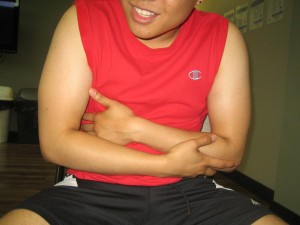Food poisoning is considered as a common health issue that affects both children and adults. Many individuals are not diagnosed since they delay treatment and get better on their own.
Symptoms of food poisoning
The usual indications of food poisoning include the following:
- Nausea
- Diarrhea
- Fever
- Vomiting
- Abdominal cramps
Classic food poisoning symptoms
Take note that there are various bacteria, viruses and toxins that can cause food poisoning. Even though most can cause vomiting and diarrhea, they have characteristic symptoms that can help identify what triggered the illness.

Staphylococcus aureus
This occurs when food contaminated by an enterotoxin (foods left at room temperature for a long period) causes symptoms such as watery diarrhea, vomiting and low-grade fever or no fever at all. The symptoms vanish within 12-24 hours.
E.coli O157
This is a specific type of E. coli bacteria that can cause food poisoning with severe stomach cramps, blood-streaked diarrhea and low-grade fever. Children can recover without treatment within 5-7 days but some end up with a deadly condition known as hemolytic uremic syndrome (HUS).
Children develop this infection about 1-10 days afterward consuming tainted meat that are not properly cooked, especially burgers. Even raw milk, unpasteurized juice and contaminated water as well as contact with farm animals.
Salmonella
This is a well-known type of food poisoning due to the recent outbreaks. The symptoms of salmonella food poisoning typically start in 6-72 hours after exposure to the bacteria and include fever, watery diarrhea, cramping, nausea, vomiting and abdominal pain. These symptoms last 4-7 days and typically vanish without requiring treatment.
Shigella
This bacterium can cause blood-streaked diarrhea along with high fever and abdominal cramps. Children develop a Shigella infection in 1-2 days after eating contaminated food such as milk, potato salad, raw vegetables and chicken. This type of food poisoning can be treated with antibiotics but most cases go away on their own within 5-7 days.
Campylobacter
This type of food poisoning is often linked with consumption of undercooked chicken as well as drinking raw milk. The symptoms develop within 2-5 days after exposure which includes abdominal cramps, watery diarrhea, muscle aches, nausea, fever and headaches. Even though the symptoms go away in 7-10 days, treatment with antibiotics specifically erythromycin reduces the duration in which the individual is contagious.
Clostridium perfringens
Clostridium perfringens produces a toxin in food. The symptoms typically start 8-22 hours after eating contaminated food, especially gravy and meats that were not properly prepared or stored. The symptoms include intense stomach cramps and watery diarrhea that can persist for 24 hours.
Clostridium botulinum
Take note that clostridium botulinum produces toxins and spores that contaminates vegetables and other foods that are canned and preserved. Aside from nausea, abdominal cramps and vomiting, botulism can also cause neurological symptoms such as slurred speech, double vision as well as difficulty swallowing and muscle weakness.
Bacillus cereus
This food poisoning can cause watery diarrhea and abdominal cramps in 6-15 hours after eating contaminated food such as fish, meat, vegetables and milk. The symptoms typically go away in about 24 hours without treatment.
